Debrief: World’s Oldest Oceanic Race
Published on July 24th, 2019
Following in the wake of three rebellious New Yorkers who inaugurated the Transatlantic Race in December 1866, a fleet of 13 intrepid crews conquered a restive North Atlantic Ocean from late June to early July in the 31st running of the classic yacht race.
Although this year’s race will go down as one of the slowest and lightest on record—the winning elapsed time was more than three days off record pace—there was plenty of competition throughout the fleet: battles for podium positions that were decided in the final 200 nautical miles of the 2,960-nuatical mile race. And battles with that old sage Mother Nature, whose ocean was at times frothy and wet and at others frustratingly windless and serene.
“We had a great race. It was really successful from our point of view in terms of enjoyment, fun and safety,” said 49-year-old Ian Budgen, tactician on Clarke Murphy’s 82-footer Aegir, which placed fourth in IRC 2.
“In our class it turned out to be a small-boat race. Realistically, when you go handicap racing offshore, you’re at the mercy of the weather systems. For us the race was calm with winds mostly in the single digits or teens. Our max windspeed was 27 or 28 knots, but for a very short period of time.”
Yachts crossing the North Atlantic typically have to deal with repeated fronts that pass them as a stream of depressions moves towards Europe. For the first few days of the race this was the case.
After the start on June 25 off Newport’s Castle Hill Light in a 10-knot southerly, the fleet was beating in 15 to 20 knots with torrential rain and lightning that evening as they headed for the first mandatory waypoints south of Nantucket Shoals and the Right Whale Critical Habitat Area.
As the sailors worked their way east, south of the large ice exclusion zone, they were also enjoying the benefits of the easterly flowing Gulf Stream, making life bumpy and wet. However, there followed a lull after the front overtook them and it wasn’t until SHK Scallywag and Wizard were south of the ice exclusion zone that they experienced the only other biggish blow of the race. It followed them for the next three to four days and propelled the race’s two fastest boats to their largest 24-hour runs — 500 nautical miles for SHK Scallywag and 492 for Wizard.
The tactics for the second half of the race were dictated entirely by a giant, frustrating and seemingly immovable bubble of windless high pressure that stretched from the Azores north to southwest Ireland and east towards England. It blocked the frontrunners west of Ireland and then moved east a fraction so the mid-fleet and followers were caught by it in the Celtic Sea. Despite the significant gap between first and last, no boat escaped its clutches.
The fight for line honors
Following the Comanche versus Rambler 88 dust-up of 2015, the heavyweight bout for line honors this year was between Lee Seng Huang’s Dovell 100 SHK Scallywag, skippered by Australian David Witt and including many of the team’s Volvo Ocean Race crew, and the VO70 Wizard, formerly the 2011-’12 Volvo Ocean Race winner Groupama 4, campaigned by David and Peter Askew.
SHK Scallywag came into the battle having never done a race longer than 2,200 nautical miles and in developmental mode. “With the exception of the rig, we replaced most of the boat this year,” said Witt. The upgrades included “new rudders, new keel, new boom, new winches, electronics… the only original bit is the rig.”
Wizard, meanwhile, came in having won the Caribbean 600 earlier this year and the Gibbs Hill Lighthouse division of the Newport-Bermuda Race last year. And although Wizard measured in 30 feet shorter than SHK Scallywag, there she was on Day 8 leading the race for line honors, the most coveted prize in the Transatlantic Race.
With Australian Will Oxley navigating, the Wizard crew did a remarkable job of spending the majority of the race ahead of their larger rival. Wizard gained the initial upper hand when SHK Scallywag sailed to the north of the Great Circle route before the ice exclusion zone and then had to beat back south of it.
SHK Scallywag temporarily regained the lead on the water, but Wizard once again vaulted ahead as SHK Scallywag went into survival mode for around 18 hours, their yacht’s mainsail jammed and unable to drop lower than the second reef. As Witt described it: “A $3 bolt almost destroyed a $3 million mainsail.”
Wizard would go storming past as the two yachts rode a depression east of the ice exclusion zone that produced winds of 25 or 40 knots, depending on which boat you were following. Wizard opened a lead of some 100 nautical miles on the water, whetting their appetite for line honors.
A few days later that battle would become moot as SHK Scallywag, back on its feet in more moderate 15-knot winds, would overtake while in a pseudo “stealth mode” because their tracking device had become waterlogged from the storm of the previous weekend.
“We had to make our big tactical decision about the high pressure and they weren’t on the tracker, so we had no clue of where they were,” said 34-year-old Charlie Enright, sailing master for Wizard.
“Whether they sailed to our line because they could see us and wanted to put themselves in the same body of water and just grind it out – I don’t know. At the same time, it’s like, ‘It shouldn’t be that close to begin with,’ so that tempers expectations.”
SHK Scallywag won line honors in an elapsed time of 10 days, 2 hours, 13 minutes and 19 seconds, significantly slower than the 7d:11h:35m taken by Comanche in 2015 and well off the 6d:22h:08m:02s record, from Newport to the Lizard, set by George David’s Rambler 100 in the 2011 race. Wizard arrived less than seven hours later, but under IRC her time corrected out to some three days and four hours faster, handing her the IRC 1 prize.
Small boat claims IRC 2
By the time the two leaders finished, the high pressure was in full control of the Celtic Sea and slowed the following boats’ approaches to a crawl. The two lead boats in IRC 2, Murphy’s Aegir and Eric de Turckheim’s 54-footer Teasing Machine, had the worst time of it, thanks to the reach of the high pressure off western Ireland. This impacted their routing from the moment they passed the ice exclusion zone, all sailing a dramatically northern route to varying degrees.
The aim here was to navigate around the north side of the windless zone, the comprise being between sailing more miles faster versus sailing a shorter route slower. Serial Transatlantic Race competitor Murphy, sailing his fourth Transatlantic Race since 2005, chose the latter, sailing closer to the high but frequently jibing out in search of more breeze. By far the longest route was taken by De Turckheim’s Nivelt/Muratet 54 Teasing Machine.
Teasing Machine’s detour around the high took her almost up to 54°N, a diversion of some 330 miles from the great circle. However, even she was eventually trapped by the high, caught longer by far than any other boat in the race, between southern Ireland and Land’s End. In one 24-hour stretch, Teasing Machine covered just 59 nautical miles, an insult to the ocean racer’s pedigree.
Giles Redpath’s 46-footer Pata Negra led IRC 2 on corrected time for a majority of the race, but even she succumbed to the windless Celtic Sea, drifting within 25 nautical miles of the Irish coastline while Peter Bacon’s XP44 Lucy Georgina benefited from the “concertina effect” and stormed up from behind.
Lucy Georgina, the lowest rated boat in IRC 2, caught up dramatically after spending almost a week riding east on the southerly winds generated by a weak front. At one point, Lucy Georgina was some 330 miles astern of Teasing Machine and more than 100 miles behind Pata Negra. But by the time they reached Land’s End Lucy Georgina and Pata Negra were bow to bow. After match racing the Lombard 46 Pata Negra up the English Channel, Lucy Georgina comfortably won the IRC 2 prize.
“It’s a great result for us,” said Bacon. “We’re fortunate that the weather favored us and not the faster boats. It’s pretty near the top of my accomplishments in sailing. We were fortunate at the corner of the ice gate. The weather lined up and we were able to point in the right direction. We had multiple days of 220 to 230 nautical miles.”
First-timer wins IRC 3
One of the tightest battles in the race was between the IRC 3 cruiser-racers. This included the oldest boat in the fleet, the heavily campaigned McCurdy & Rhodes 48 Carina of former New York Yacht Club Commodore Rives Potts, and the similar vintage S&S 49 Hiro Maru, skippered by retired architect Hiroshi Nakajima. Also in IRC 3 was the smallest boat in the fleet, German Constantin Claviez’ Swan 441 Charisma, the 1985 Hinckley SW-51 Kiva of repeat competitor Mark Stevens and Howard Hodgson’s and Ryan Hughes’ J/160 True, the newest boat in the race. Apart from Charisma, which fell off the weather train early in the race, all benefitted from being carried across the Atlantic on the unusual band of southerlies from which Lucy Georgina had also benefitted.
While the impeccably sailed Carina set out as favorite to win IRC 3 and indeed led for the most of the race, ultimately it was 62-year-old Nakajima and his restored Hiro Maru that claimed the class win by just over three hours from Carina.
Nakajima felt the decisive moment was at the Scilly Iles where they had gone south of them as Carina sailed to the north. “I think we enjoyed slightly better breeze than Carina, we really closed the gap at that point,” said Nakajima, who was sailing his first Transatlantic Race.
Despite the strong performance of Lucy Georgina, ultimately it was the Askew brothers and their pro crew including Volvo Ocean Race luminaries Enright and Oxley who claimed overall victory in the Transatlantic Race 2019. While the Askews won the Transatlantic Race in their first attempt, for Enright it was his second consecutive overall victory, after having led Bryon Ehrhart’s and William Finlay’s 64-footer Lucky in the 2015 race.
“It was a long race, longer than I thought it would be,” said 52-year-old Peter Askew. “I think we were lucky in the middle of the race. We hooked into a low that stayed with us for four days. That gave us a big push halfway through. We were going 20 to 24 knots surfing down waves. Good close reaching conditions that the boat really likes.”
Event details – Crew list – Tracker – Results
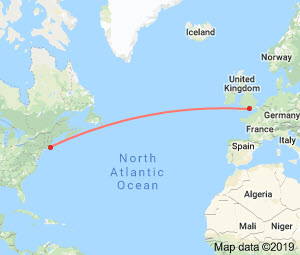 Background: The Transatlantic Race 2019 started June 25 for the 2,960-nautical-mile course from Newport, R.I., to Cowes, England.
Background: The Transatlantic Race 2019 started June 25 for the 2,960-nautical-mile course from Newport, R.I., to Cowes, England.
The 15 yachts entered was reduced to 13 prior to the start when the Mills 68 Prospector was dismasted during the 2019 Annapolis-Newport Race and the Baltic 55 Fearless withdrew due to troubles with the water maker.
After the start, Joe Mele’s Farr 50 Triple Lindy had returned to Portsmouth, R.I. on June 26 to replace a burned-out alternator. After restarting the race from Castle Hill Light at 0405 UTC on June 27, they withdrew later that night when Mele had to return home to New York for a personal emergency.
The race is organized by the Royal Yacht Squadron, the New York Yacht Club, the Royal Ocean Racing Club, and the Storm Trysail Club.
Pre-start activities took place at the New York Yacht Club’s Harbour Court clubhouse in Newport, while awards will be presented at the Royal Yacht Squadron’s Cowes Castle clubhouse on the Isle of Wight.
The race is a direct descendant of the first great transatlantic ocean race, which started from New York Harbor on December 11, 1866. The 2019 edition will be the 31st transatlantic race organized by the New York Yacht Club with the fleet to start off Castle Hill Lighthouse.
Source: New York Yacht Club


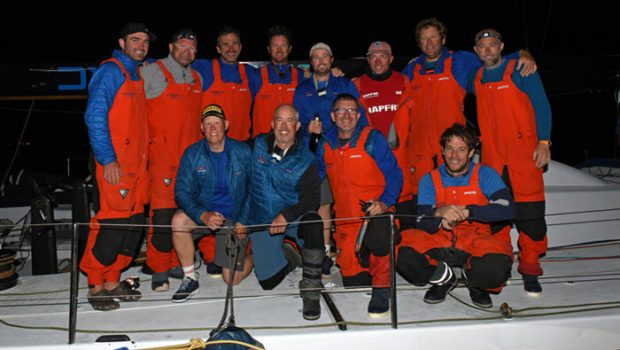







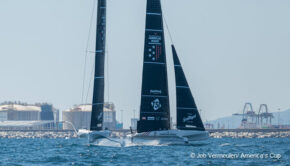
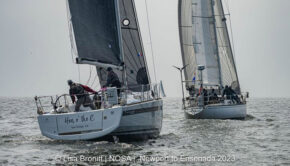
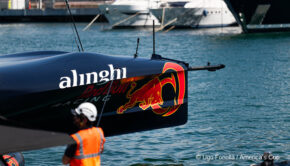
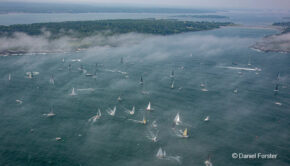
 We’ll keep your information safe.
We’ll keep your information safe.